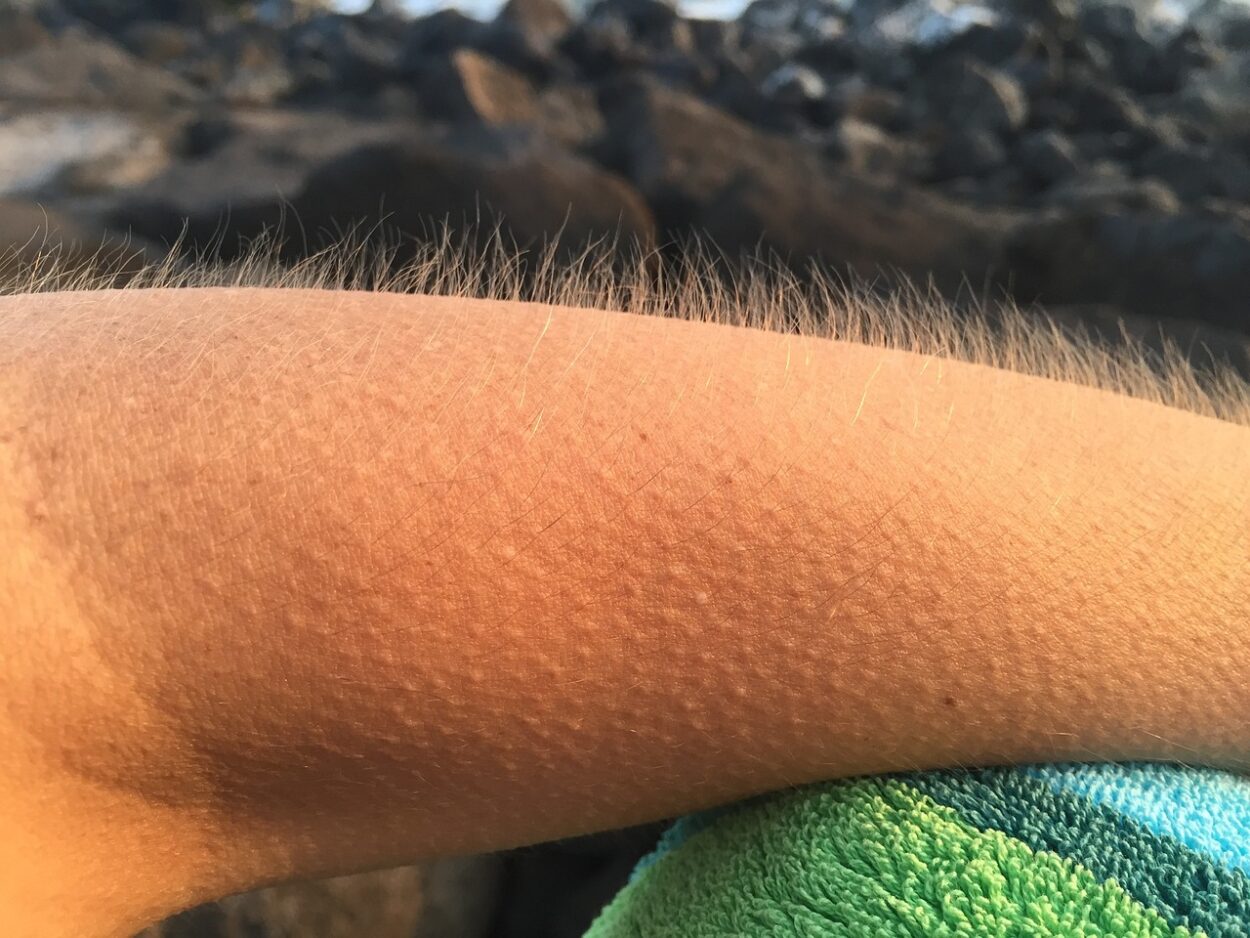Goose bumps are a sign of arousal, and they can be caused by a variety of emotions, including fear, surprise and love. They are also triggered by certain drugs and cold temperatures.
Goose bumps are caused by contractions of tiny muscles at the base of hair follicles called arrector pili muscles. They are sometimes referred to as the piloerection reflex.
Fear
Goosebumps crop up in response to things that are frightening, arousing, or otherwise stimulating. They are triggered by the sympathetic nervous system, which is associated with fight or flight responses and other instinctual activities like breathing deeply and increasing your heart rate. They may also be caused by a variety of physical exertion, such as running or playing sports, or when you’re having a bowel movement.
Goose bumps are sometimes caused by a physical phenomenon called piloerection, which happens when tiny muscles in hair follicles contract and pull them upright. This causes the skin to look a bit like the skin of a plucked bird. This is usually a harmless reaction, but it can also happen in cold weather and as part of the body’s “fight or flight” response to very stressful or threatening experiences.
Piloerection is common in animals with fur, as it helps them conserve body heat by retaining warm air near the skin. The reaction can also make them appear larger and more dangerous to predators, which is why porcupines puff up their quills when they’re threatened. In humans, it’s more often a result of strong emotions or arousal. One study found that viewing social stimuli, such as emotional conversation between actors in a film, prompted more goosebumps than listening to music, and women were more likely to get them than men. Rarely, a goosebumps reaction can be a sign of a medical condition called autonomic dysreflexia, which occurs when the part of the body that controls automatic functions, such as breathing and pumping blood, overreacts to pain or discomfort.
Awe
Goosebumps also occur when we feel awed. Studies suggest that this experience of awe triggers the release of adrenaline and an increase in blood flow to the brain associated with motivation and reward. The sensation of awe may also decrease markers of chronic inflammation.
The physical response to feelings of awe is often called piloerection (literally “goose bumps”) or the “pilomotor reflex.” It is similar to the way many animals raise their fur in cold weather, which allows them to appear larger and creates an insulating layer that preserves body heat. This response is part of our survival instincts, and may have helped our ancestors look more intimidating to predators. It is sometimes accompanied by shivering and/or teeth chattering, and is a type of “chill reaction” that helps us conserve our energy in the face of a threat.
Goosebumps can be triggered by fear, surprise, sexual arousal, love, or other intense emotions. But they can also be triggered by cold temperatures or by observing something beautiful or moving. Researchers believe this is because awe experiences activate several of the same pathways that elicit other types of strong emotions, like shivering and increased heart rate. Interestingly, awe is positively correlated with empathy and negatively correlated with envy. This may be because awe helps stabilize social hierarchies while envy tends to undermine them.
Surprise
Goosebumps can be triggered by any strong emotion, including fear, surprise, defense and admiration. The prickly feeling is also sometimes a sign of an adrenaline rush, which can trigger tears, sweaty palms, trembling hands and a racing heart. It’s also a common reaction to cold weather, where the body responds by shivering and raising its hairs to create an isolating layer that preserves body heat.
Goose bumps occur when the muscles in the base of your neck and armpits — called the arrector pili muscles — contract as a response to an external stimulus, such as a touch or sound. They are often a result of adrenaline, which is released by the adrenal glands and other neurons in your brain. The resulting reaction is similar to the fight-or-flight response experienced by some furry animals, who raise their feathers to appear bigger and more intimidating.
But unlike some other bodily reactions to fear and arousal, goosebumps are usually not dangerous. In rare cases, they can be a sign of a medical condition, such as autonomic dysreflexia, an overreaction of the nervous system caused by a spinal cord injury. They can also indicate a chronic medical problem, such as keratosis pilaris (a harmless, but annoying skin disorder) or temporal lobe epilepsy, a type of seizure that affects the right side of your brain.
Pleasure
If goosebumps come to you during pleasurable experiences such as listening to beautiful music, reading poetry or watching a moving movie, you’re experiencing what’s known as pleasure or frisson. Freisson is a psychogenic shivering that happens involuntarily and usually occurs at stimulating sites like the scalp, arms, legs, chest and neck. You’ll also experience goosebumps at times of physical exertion, such as when you’re running or singing a song in your car.
Goosebumps are triggered when nerves from the sympathetic nervous system, which controls your fight or flight response, contract tiny muscles in your skin, slightly elevating the hair follicles. The reaction is involuntary and doesn’t serve any purpose other than to make you feel awed, surprised or moved. It’s similar to a fear response in nonhuman animals, such as cats that raise their fur coats to appear bigger to scare off predators.
Goosebumps can also occur due to medical conditions, such as autonomic dysreflexia. This reaction is when your body’s automatic systems, which control things such as breathing and pumping blood, overreact to pain. This condition is caused by spinal cord injuries and can cause severe pain, headaches and facial flushing, along with goosebumps. It can even lead to seizures. That’s why you might hear people say that they’re quitting something “cold turkey,” a reference to the clammy, goose-pimply skin many people experience in the lead-up to and during withdrawal from heroin or other drugs.




Leave a Comment